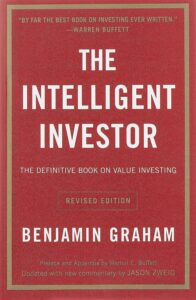Introduction
Financial markets and institutions play a crucial role in the economy by facilitating the flow of funds between savers and borrowers. These institutions provide various services, such as pooling the savings of individuals and channeling them into investments, managing risk, and providing liquidity to the financial system. One of the most influential authors in this field is Frederic S. Mishkin and Stanley G. Eakins.
Frederic S. Mishkin is a renowned economist and professor at Columbia Business School who has made significant contributions to the study of monetary policy, financial markets, and inflation targeting. He has held various positions in the Federal Reserve System and was a member of the Board of Governors of the Federal Reserve System from 2006 to 2008. He has also written extensively on financial economics, with several books published on the topic.
Stanley G. Eakins is a professor of finance at East Carolina University and has co-authored several books with Mishkin, including The Economics of Money, Banking, and Financial Markets. Eakins has also served as an economic consultant for several organizations, including the Federal Reserve Bank of Richmond and the World Bank.
Contributions to Financial Markets and Institutions
Mishkin and Eakins’ work on financial markets and institutions has had a significant impact on the field. Their books and articles are widely used as textbooks for undergraduate and graduate courses on financial economics. Their research has also influenced policymakers and central banks, shaping monetary policy and regulations.
One of their main contributions is in the field of monetary policy. In their book The Economics of Money, Banking, and Financial Markets, they explain the tools, objectives, and challenges of monetary policy. They also discuss the role of central banks in maintaining price stability and promoting economic growth.
Mishkin and Eakins have also made significant contributions to the study of financial institutions, such as banks and non-bank institutions. They explain how these institutions function, their role in the economy, and the various risks they face. They also discuss the regulations and policies that govern these institutions and how they are affected by changes in the financial system.
Their work on financial markets has also been influential. They explain the types of financial markets, such as money markets, bond markets, and stock markets, and how they facilitate the flow of funds in the economy. They also discuss the role of financial instruments, such as stocks, bonds, and derivatives, in these markets.
Current Relevance
Mishkin and Eakins’ work remains highly relevant today, as financial markets and institutions continue to play a crucial role in the economy. The ongoing COVID-19 pandemic has highlighted the importance of understanding and managing risks in the financial system, which is a topic extensively covered in their work.
Their research on monetary policy is also highly relevant, as central banks around the world are facing challenges in maintaining price stability and promoting economic growth. Mishkin and Eakins’ insights into the effectiveness and limitations of monetary policy tools and strategies can provide valuable guidance for policymakers.
Moreover, their work on financial institutions and markets is essential for understanding the current state of the financial system and addressing any shortcomings. As technology and innovation continue to shape the financial landscape, Mishkin and Eakins’ research can help in identifying potential risks and developing appropriate regulations.
Conclusion
In conclusion, Frederic S. Mishkin and Stanley G. Eakins have made significant contributions to the study of financial markets and institutions. Their work has influenced academic research, policymaking, and the understanding of the role of these institutions in the economy. Their insights into monetary policy, financial institutions, and markets remain highly relevant and valuable for current and future generations.
